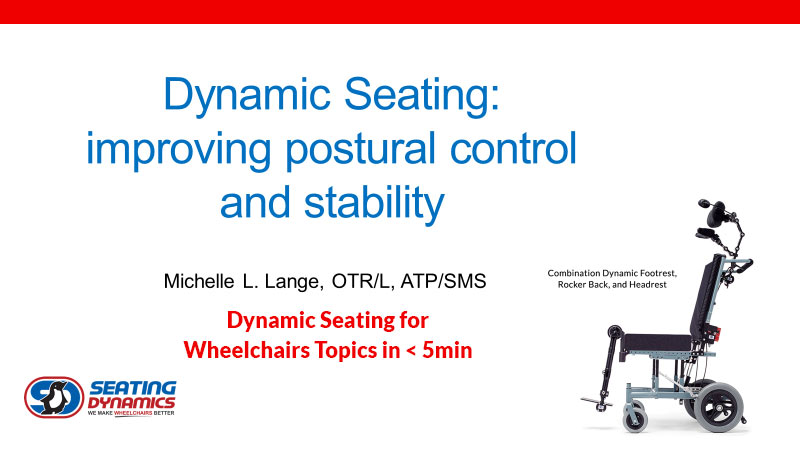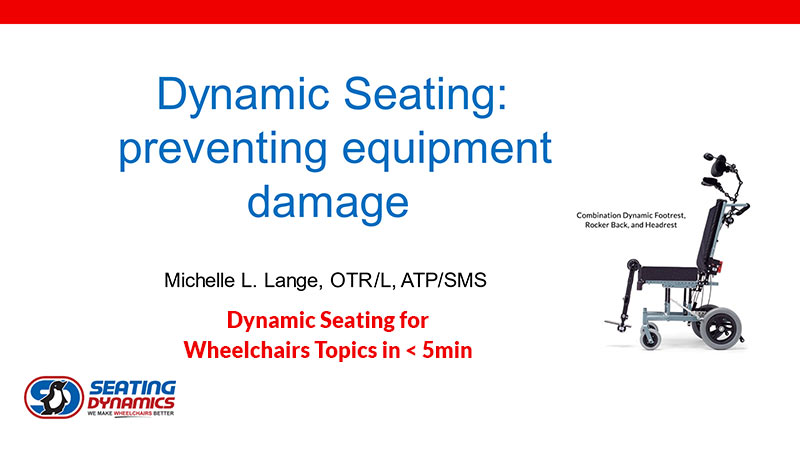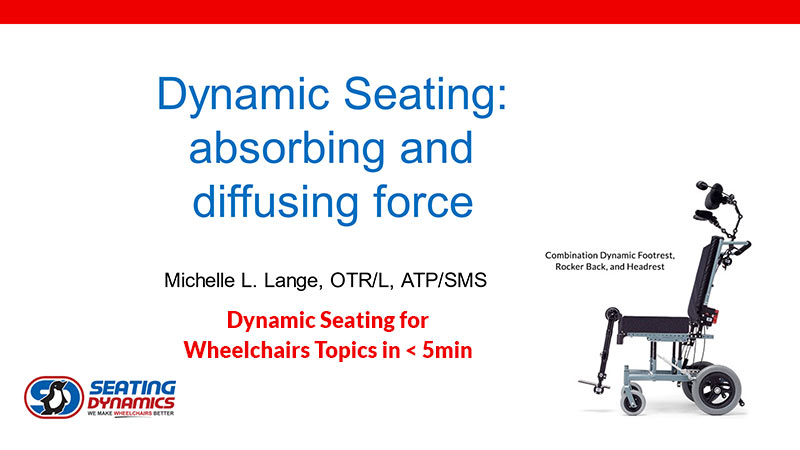Quick Class: Dynamic Seating – Improving Postural Control and Stability
Dynamic seating provides resistance to movement initiated by the wheelchair user, usually through spring or elastomer type mechanisms or other resistive, but mobile components. Movement against resistance has been demonstrated to increase strength in people with increased muscle tone without an increase in spasticity. Increased muscle strength can, in turn, improve both postural control and functioning.
Quick Class: Dynamic Seating – Allowing Movement
Dynamic Seating moves in response to client forces. Many clients move, not due to increased extensor tone, but rather for the explicit purpose of moving. We all tend to seek out movement. We are wired to move, and movement has so many benefits.
Quick Class: Dynamic Seating – Preventing Equipment Damage
The forces from extension on a static wheelchair seat and frame can be so strong as to cause damage to equipment. Hardware used to mount the seating system and components (such as a head support), are particularly susceptible to damage.
Quick Class: Dynamic Seating – Absorbing and Diffusing Force
Many clients using wheelchair seating have increased muscle tone. This can lead to active extension, particularly at the hips, knees, and neck.
Quick Class: What is Dynamic Seating?
Definitions and terminology may not seem very exciting but are very important. It is critical that we each know exactly what assistive technology or intervention is being recommended or used. In this video, Michelle Lange presents a definition and explains What is Dynamic Seating?
- « Previous
- 1
- 2





